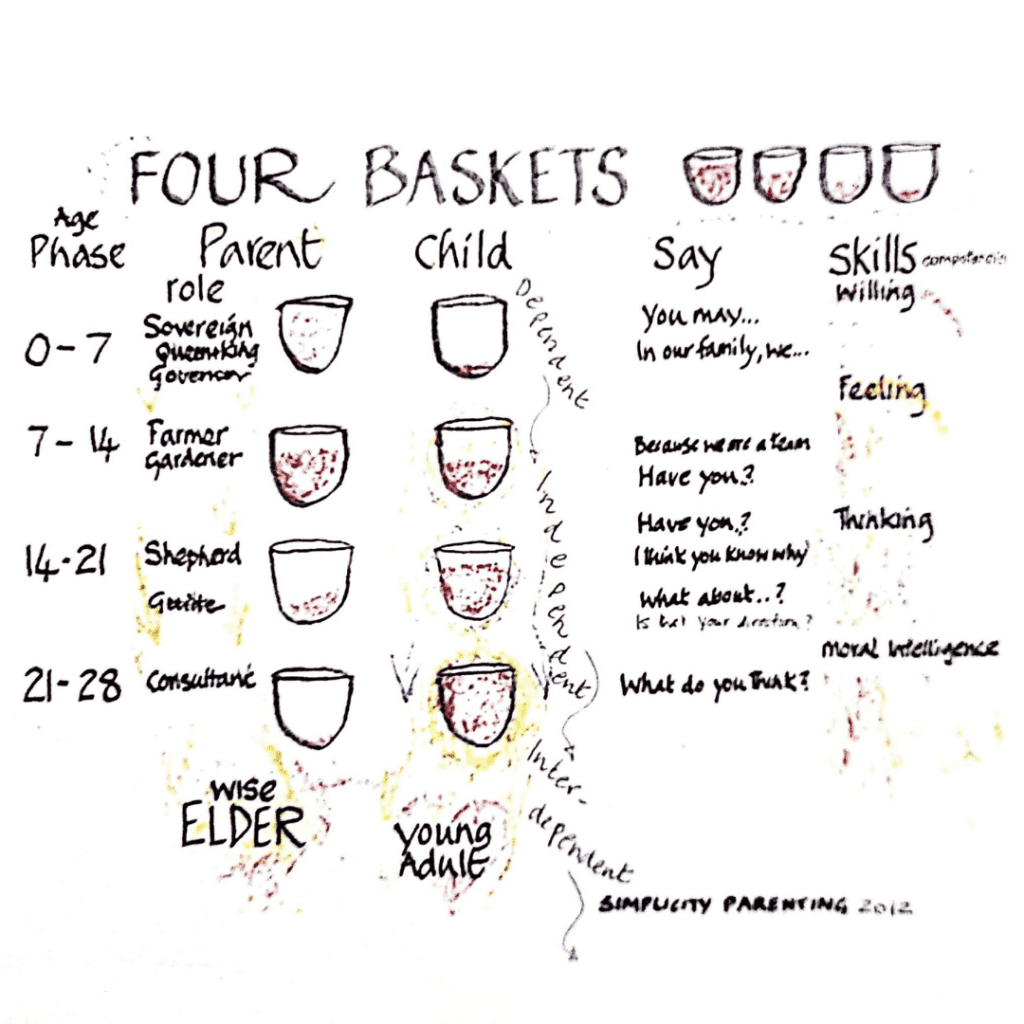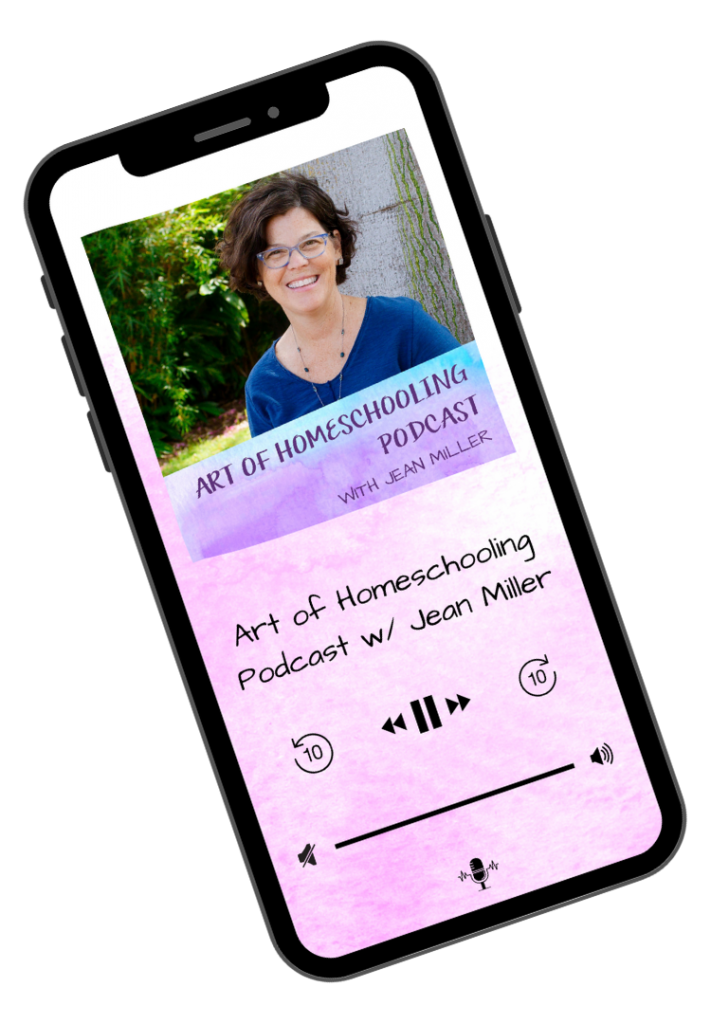Episode 174
When I think back about my end goal as a homeschooling parent, I would say it was to promote independent learning.
Throughout my educational experience, I’ve noticed that most teaching methods, Waldorf included, are heavily teacher-directed. The teacher is planning, preparing, and leading the learning most of the time.
So how do we end up with independent learners?
Now that my kiddos are grown, I can look back on our journey…and I can trace the development of independent learning from when they were young to where they are now.
There are lots of little steps along the journey toward independent learning!
Let me just say that these days, I see in all three of my children this amazing lifelong learning quality. When they have an interest in something new, they dive in and learn all they can about it. Whether that’s building a mountain bike, foraging for mushrooms, pickling vegetables, or exploring a new city.
This is the ultimate goal ~ to raise independent, lifelong learners!
In this episode of the Art of Homeschooling podcast, I trace the learning journey of a Waldorf-inspired homeschooler on the path to developing independent learning, from kindergarten to high school and beyond.
You’ll find links and highlights from the episode below. Thanks for listening!
“Our highest endeavor must be to develop free human beings who are able of themselves to impart purpose and direction to their lives.”
~rudolf Steiner
This post contains affiliate links for your convenience. You can read my full disclosure policy here.
How to Promote Independent Learning
Let’s start at the beginning!
The kindergarten years in a Waldorf-inspired homeschool are a time for “preserving childhood.” A warm and loving parent creates a beautiful play environment, sharing stories and songs, and engaging in meaningful activity that our children can observe and imitate.
These young children learn about the world through play and interactions. We also lay the foundation for literacy with songs, stories, and movement.
For me, I wanted my kiddos to be able to spend lots of time outdoors in those early years. So we had a garden, pets to care for, and volunteer work at a local farm.
In the next phase, grades one through three, we as parents lead the lessons and gently introduce our children to learning through stories and pictures and engaging artistic activity.
We also choose playthings that will inspire our children to play alone for longer periods of time while we work nearby with an older sibling or tend to a younger sibling.
In these years at our house, I really appreciated that my kiddos could spend some time each day learning from me and some time exploring their own interests.
Then beginning after the nine-year change, around fourth or fifth grade, we can begin promoting independent learning in a more direct way .
I encourage you to zoom out to see that independent learning in our homeschools unfolds over many years.
Promoting Independent Learning at Home
Rudolf Steiner created the Waldorf method for grades 1 to 8 classrooms and so there was never really any consideration for how to shift the control or responsibility for lessons and learning to the children.
At home, it’s a different story. We’re blessed with an opportunity to promote independent learning by helping our children develop their interests and follow their passions.
Eric Fairman, author of the Path of Discovery series, suggests starting with a “challenge project” to encourage children to develop independent learning strategies.
Activities such as reading a book independently, working on an art project related to the book or era being studied, and then writing a narrative, informative, or biographical sketch are good places to start.
Progress from one or two challenge projects per year in fourth grade to several per year by eighth grade.
Start where you are and build from there. The goal is to help your children experience success working on a project of their own choosing and design ~ and have fun while doing it!
My Top Tips for Nurturing Lifelong Learning
- Allow children to choose a project within certain parameters. They’ll be so much more invested when they have some choice in the matter.
- Help them break the project down into steps when you first introduce this. Remember, independent learning happens over many years.
- Encourage them to set aside time each week to work on the project. Time management is a big part of independent learning!
- Agree on an endpoint of the project, a due date of sorts, as well as a way for your child to share their work.
Independent Learning for Every Stage
Just as our role as parents change through the years, so does our role in supporting independent learning.
I love how Kim John Payne of Simplicity Parenting describes these roles.
- In the early years from birth to age seven, our role is the sovereign queen or king, guiding our children as our children explore the world through their will and imitation.
- Then from the ages of seven to fourteen, we are the farmer and gardener helping our children explore the world of feelings.
- And finally, from ages fourteen to twenty-one, we’re their shepherd and guide as they develop their thinking skills.
- After twenty-one, we become the consultants!
These four “baskets” of responsibility carry less and less as we, the parents, turn over more and more responsibility to our kiddos.
Growing independent learners is a journey of many small steps!
How will you promote independent learning in your homeschool?

Rate & Review the Podcast
If the Art of Homeschooling Podcast has inspired you, I’d LOVE it if you could rate and review the podcast on your favorite podcast player! Reviews can be left on Apple Podcasts (iTunes), Podcast Addict, or Stitcher.
Or simply pop on over to lovethepodcast.com/artofhomeschooling and choose where you want to leave your review.
And if you want to show your appreciation for the Art of Homeschooling Podcast, you can buy me a cup of tea!
Never Miss an Episode!

Check Out All the Episodes Here





